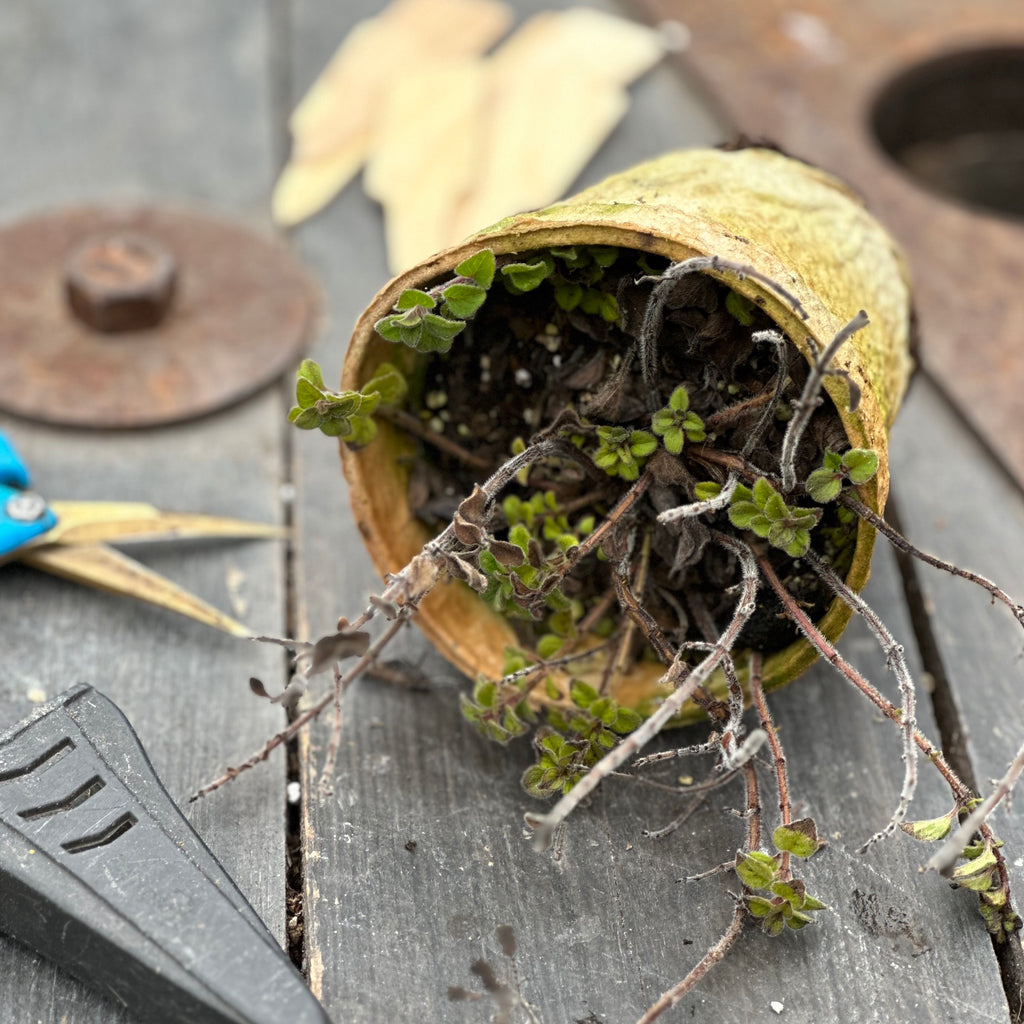One bit of confidence... or perhaps foolhardiness... I have developed over the years has been to get very familiar with letting certain types of plants rest through winter. Of course, most classic houseplants remain evergreen and lush through all seasons when kept warm, watered, and fed; but, many interesting and cherished plants actually are, in my opinion. easier to care for if allowed to "relax" during the off-season. Some, like figs and lemon verbena, basically require a fully-dormant season while others go into a semi-dormant state that can be unsettling... until you get to realize this is completely normal.

Ideal candidates for a relaxed (i.e. let them relax!) approach to winter care include many mid-zone herbs and perennials, but also some semi-tropical fruiting plants, and even a few tropicals (ginger & turmeric, for example). This is particularly helpful to know in fall, as you bring plants indoors - but now that we are most of the way through winter, the discussion remains helpful in that you may be looking at some of your plants and wondering such big thoughts as "are these even still alive!"

The oregano pictured above is a perfect example of how many low-to-mid-zone perennials behave when wintered indoors, that is, by losing much of their foliage and in some cases dying right back to the soil line. Late winter is a perfect time to trim up any of the old stalks, remove fallen leaf debris and start to water and feed more regularly. Notice how much tidier and promising the oregano looks in the second photo, after having the old stems cut off!

In some cases, wintered plants may be completely dead looking, with no green foliage to offer hope. As mentioned, this is normal for plants like figs, but there are many others that leave gardeners wondering. Above is a woody and wonderful sage, called Blue Sage (the aroma is so good!), and in the second photo below you can see that I have made a small knick in the bark on the left-hand stem; I call this a "scratch test". It is easiest to do the scratch test with a fingernail, but a sharp knife works well too - just be careful not to cut too deeply into the wood. By evaluating whether the bark scratches green, scratches but not easily, or does not scratch at all you can get a very good sense of whether your "dead-looking" woody plants are very much alive, alive but need to be trimmed down, or not alive. If the scratch test goes poorly, try lower down the stem as it is common for stem tips to be dead but lower growth to be full of vitality.

Another helpful area to investigate on scruffy wintered plants is the root system. Dead or dying plants will not have vibrant roots while healthy but dormant or semi-dormant specimens will have sturdy, colourful roots that feel solid. Checking the root zone is also an opportunity to split root-bound plants open, and repot. Breaking open dense roots followed by repotting is a surefire way to envigorate a sleepy plant. As a tip, you want to hear a nice crunch as you snip and then pry open roots at the base!

Dense, tangled roots, like those pictured on this overwintered rosemary, start to function poorly. These roots are full of vitality, but It makes a big difference to break them open and repot!

One supplement that is particularly handy when dealing with plants that are mid-stride is the fermented potassium fertilizer called Organic Rage Plus, from Evolve. Potassium regulates many key plant functions and potassium fertilizers have been shown to be particularly helpful for stressed plants, as well as for plants coming out of dormancy. Compost-based formulations like rage Plus are particularly good for this! We do have a limited number of free samples available right now (perfect to help out a few indoor plants), as well as the full-sized 1L bottles in stock.

Hopefully this short guide gives you confidence that dead-looking or struggling herbs and mid-zone perennials (wintered indoors) are often in fact okay... just feeling a little sleepy. Now you can look forward watching these come back into their glory as spring arrives!







